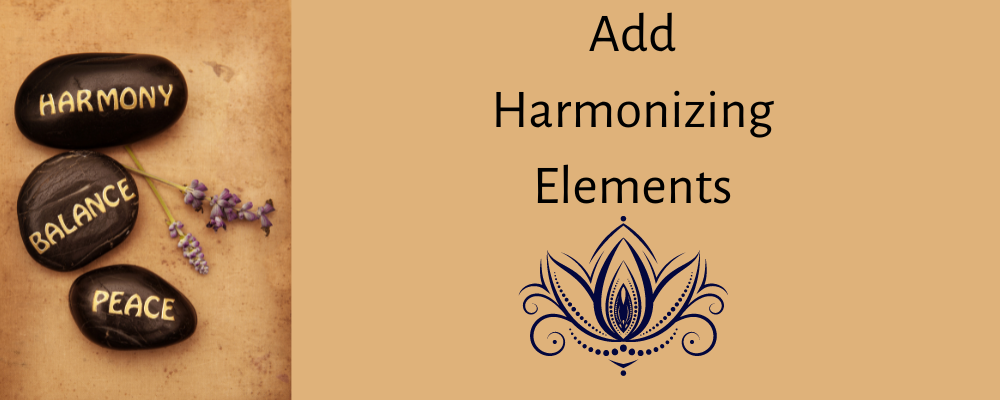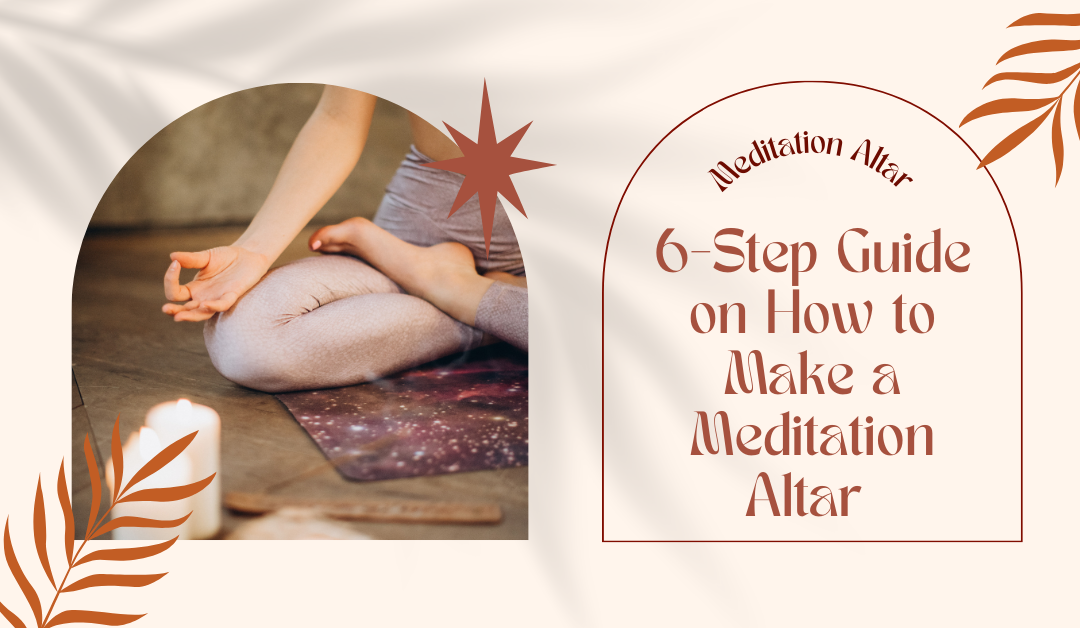Meditation takes a lot of time and patience. If you’re just getting started, I suggest skipping this article and reading one of the following:
Why?
Learning how to make a meditation altar can take the fun out of meditating. You’ll need to spend time and money on your table, supplies and other times. But if you’re new to meditating, your goal should be to practice daily.
However, if you’re an avid meditator, an altar can help strengthen your practice and make it easier to get into the meditation mindset.
With that said, let’s dive into the step-by-step guide on creating meditation spaces of your own.
How to Make a Meditation Altar in 6 Steps
1. Understand What an Altar is Before You Begin
What’s the goal of this space? You’ve likely seen an altar before, but if not, you can see them in the Butsudan, or in the homes of Japanese Buddhists. However, these altars are meant to honor loved ones or the Buddha.
With this in mind, your meditative altar focuses on your practice with:
- Ornate décor
- Focal points for meditation
- Tools you can use for meditation
I do want to be abundantly clear that these altars are not tied to a religious affiliation. Instead, the area is meant to help you with your practice, but if you do want to make it religious in nature, that is 100% up to you.
2. Carve Out Space for Your Meditation Practice
Meditation requires an immense amount of concentration and “being.” If someone comes and knocks on the door or your dog keeps trying to give you kisses, your meditation practice isn’t going to work well for you.
You need to carve out a space and consider the following:
- Search for a space where you have the lowest risk of being interrupted
- Consider natural light and being able to see the outdoors
- Choose a calming space that you like
You can work on making this space comfortable, too. Comfy cushions on the floor, an incense burner or something similar and even a sound machine can be added to the space. If you live in a home where noise is almost impossible to eliminate, you may want to invest in a white noise machine.
Everyone who meditates deserves to have a space to call their own.
Make your space something special.
And now, you can focus on the altar. I’m a true believer that the space is more important than an altar, so always start with your space before worrying about the next steps.
3. Setup a “Meditation Altar Table”
An altar for meditation is often associated with a table, but you can use shelves or anything higher or lower than you. The one thing I do want to mention is that if you practice candle meditation, be very careful of using candles on shelving.
You can add a tablecloth to the space if it helps, too.
However, if you don’t have the room for a large, dedicated space, don’t worry: floor altars work well, too. Normally, you’ll find people sitting on yoga mats or blankets and have an altar in front of them.
With a floor altar, you can take it out when you need it and put it away easily.
For anyone in a flat or small apartment, the floor altar may be in your best interest.

4. Add Harmonizing Elements
Harmony is one of the main goals of an altar. You want the space to free your mind, add a calming effect and potentially bring the outdoors, indoors. Studies even show that spending time in nature helps with:
- Mental clarity
- Calmness
- Anxiety
- Attention
And all of these are great for your practice. You have a few options here, such as:
- Earth elements: Such as plants or wooden items.
- Flowers: To add a nice scent to the space and provide additional earth elements.
- Candles: A representation of the fire element, candles will provide a sense of harmony. You can even try electronic tealight candles for added safety if you like.
On my own altar table, I have a Buddha water fountain, which provides the soothing sound of water and makes the area more calming. You can add anything to the space that helps bring harmony and a sense of calming.
If you add items that are too distracting, you will make your meditation even more difficult.
5. Think About Your Must-Have Meditation Tools
Meditation altar supplies can include a lot of different items, but there are a few meditation tools, which you can use during your sessions. If you do use tools, they should be on your altar so that they’re easily accessible when you need them most.
A few of the most common tools for meditating, include:
- Singing Bowl: The Tibetan singing bowl is a powerful tool that uses sound to help with healing. Many people will use these sounds to open up their chakras.
- Tuning Forks: If you don’t like the bowls above, you can consider tuning forks.
- Candles: Candle meditation is a very popular practice, so you may need candles.
- Oil diffuser: Scent can help provide energy and calming effects and really help you get into the meditation mindset.
You can also consider crystals, prayer beads or other items that you need for your practice.
6. Consider Other Meditation Altar Supplies
Finally, you can have some fun here and add altar supplies to the space. However, be careful when using candles and do so at your own discretion. The following items are fun additions to your dedicated space or sacred altar:
- Prayer beads
- Candles
- Meditation balls
- Altar cloth
- Personal treasures
- Fresh flowers
- Mala beads
- Statues
- Photos of loved ones
- Quotes, mantras or words of wisdom
- Lights
- Incense
- Singing bowls
- Crystals
- Salt lamps
Only you can decide what to put on your meditation altar. But I recommend you focus on removing all negative energy and creating more positive energy.
Honestly, there’s no right or wrong way to create an altar for meditation. Everyone has their own preferences, so just use these recommendations loosely. The goal is to have a sacred space you enjoy.
Note: We wanted to make this article more about setting up your altar rather than filling it with meditation altar ideas. However, we are writing on the topic and will post a list of ideas for you to read through shortly.
Finally, now that you know how to make a meditation altar, you can begin designing your own. Take your time, have fun with the process and add to it as your tastes change or you find another, neat way to make it better.

